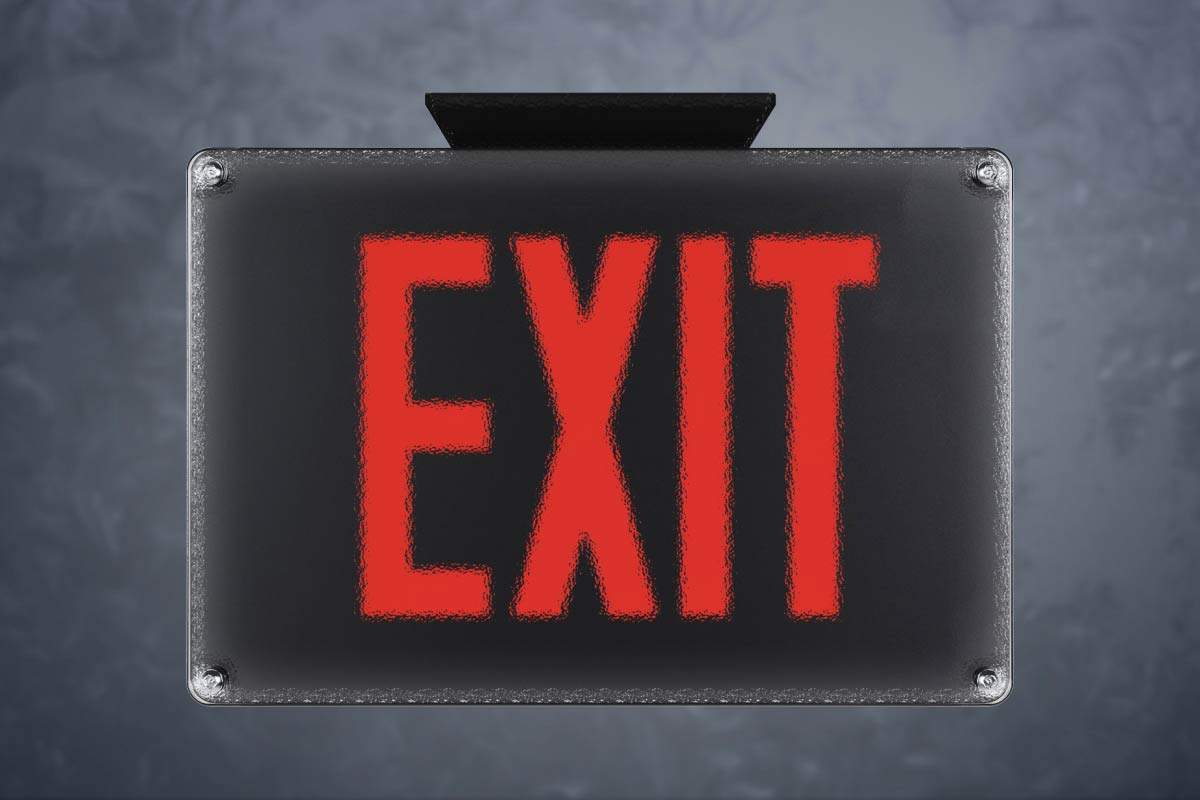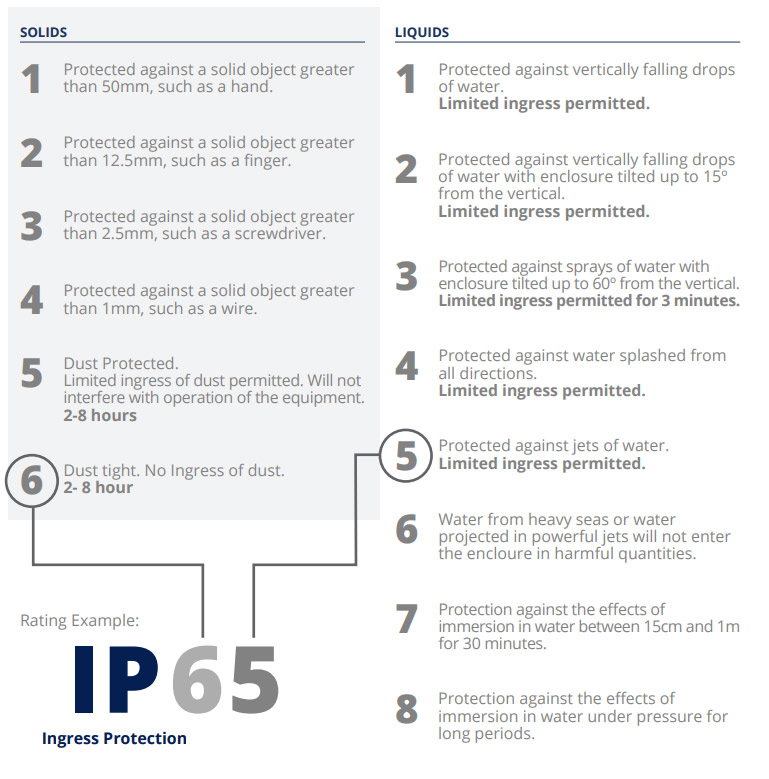
Recognizing the need for a consistent measuring reference for how well electrical devices prevent intrusion of external items like dust and water, the International Electrotechnical Commission (IEC) published the IP rating system in 1976. The first edition, IEC 60529, was intended to consolidate ingress protection requirements into a single document, regardless of industry or device type. Before this effort by the IEC, different industries and equipment types had developed isolated standards for the relative enclosures.
The design of the IP code
In most cases, the code consists of the same two letters (IP) plus just two more digits. Some codes may also include additional letters at the end of the code. The first digit indicates protection against solid objects (dust, fingers, tools), rated from 0 (no protection) to 6 (dust-tight). The second digit indicates protection against liquids (water), rated from 0 (no protection) to 9 (protection against high-pressure, high-temperature water jets).
IP ratings may include a letter at the end of the two numeric digits. This extra letter provides information about the ingress protection related to specific materials or hazards. The most common letter indicators are D (wire), F (Oil resistant), H (high-voltage device), M (device moving during water test), S (device standing still during water test), and W (weather conditions).
These IP ratings are widely adopted worldwide, including in the United States. However, North America also uses the NEMA rating system for enclosures, which is not globally standardized and covers additional aspects beyond ingress protection.
Since its introduction, the European Committee for Electrotechnical Standardization (CENELEC) has widely adopted the IP rating system in the European Union. It is now commonly referenced in product specifications for industrial equipment, consumer electronics (such as smartphones), lighting fixtures, and many other fields. The system helps manufacturers and consumers move beyond vague marketing terms like “waterproof,” providing specific, testable claims about a product’s resistance to environmental factors.
What is NEMA?
The National Electrical Manufacturers Association (NEMA) published numerous standards and ratings for electrical equipment, among which is an ingress rating. NEMA ingress ratings are different and primarily used in North America; they are not globally standardized and include broader protection criteria than IP ratings. Manufacturers can use both: Many products, especially those intended for global markets, may display IP and NEMA ratings.
Unlike the IEC IP Ratings Chart, the NEMA enclosure ratings table accounts for indoor and outdoor applications and different liquids (e.g., oils and corrosive fluids).
IP Ratings Myths and Misconceptions
- Many believe that an IP rating, such as IP65, means a device is completely waterproof or dustproof. IP65 indicates the device is protected against low-pressure water jets, not total immersion, and “dust tight” ratings still allow minimal dust ingress under extreme conditions.
- A common myth is that a higher IP rating is always preferable. However, higher ratings are only necessary for environments where greater protection is required. Over-specified enclosures can add unnecessary cost and project complexity.
- Some assume that if a device is rated for submersion (e.g., IP67), it is protected against water jets (e.g., IP65). The tests for different types of water exposure are not interchangeable; a device may pass submersion tests but fail water jet tests, and vice versa.
- There is a misconception that an IP rating from any manufacturer is equivalent. However, some devices are self-certified rather than independently tested, leading to potential inconsistencies or exaggerated claims about protection levels.
- IP ratings only address protection against solid objects and water. They do not account for other hazards such as chemicals, UV exposure, extreme temperatures, or mechanical impacts. Additional standards may be needed for these factors.
- Another misconception is that an IP rating is a permanent guarantee; however, the rating applies to the device’s condition when tested. Aging, wear, damage, or improper installation can compromise protection over time.
- It is incorrect to believe that a high IP rating (e.g., IP69) means the device also meets all lower ratings (e.g., IP65, IP67). Each rating addresses specific test conditions, and a device may need separate certification for each scenario.








